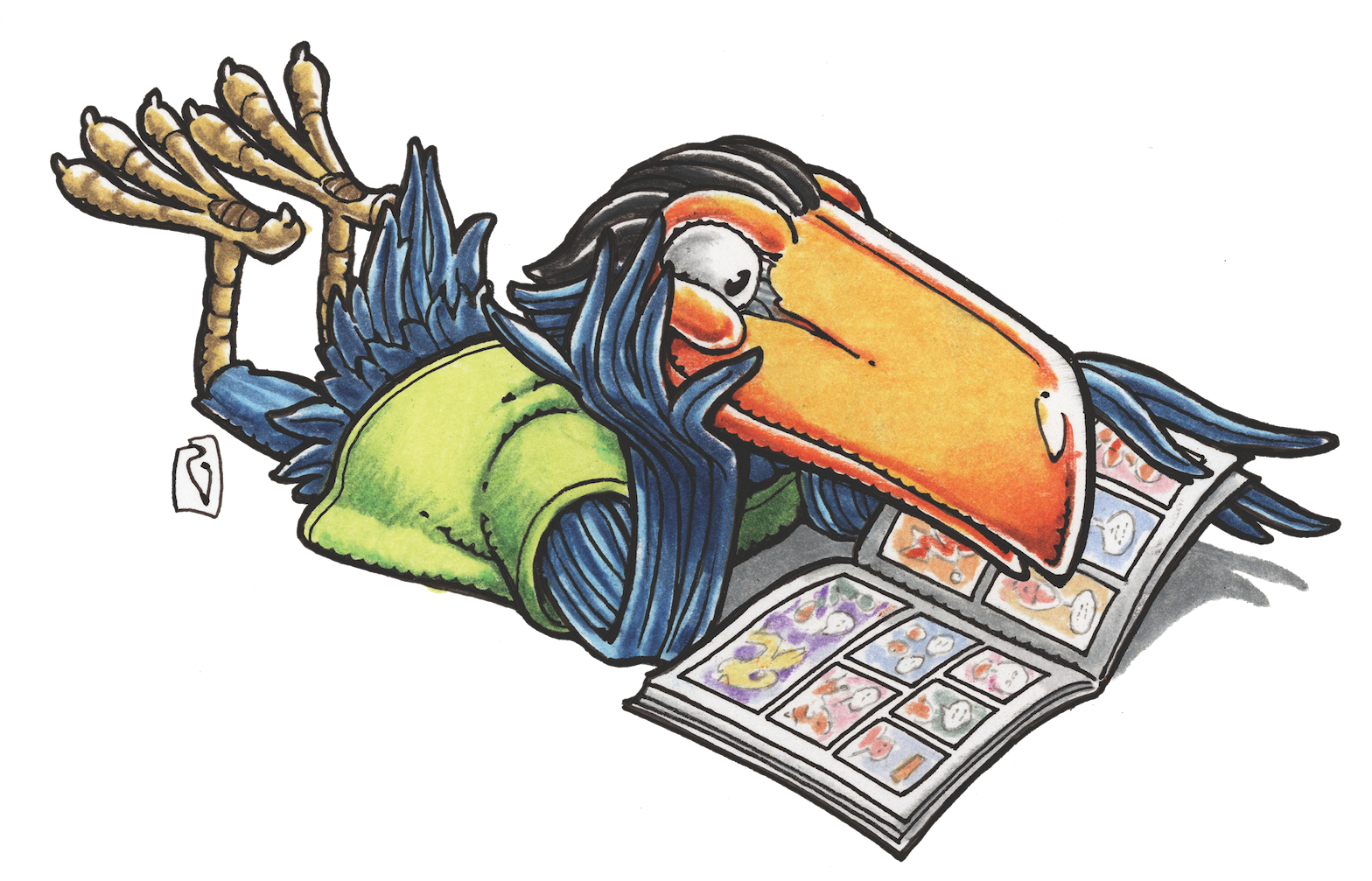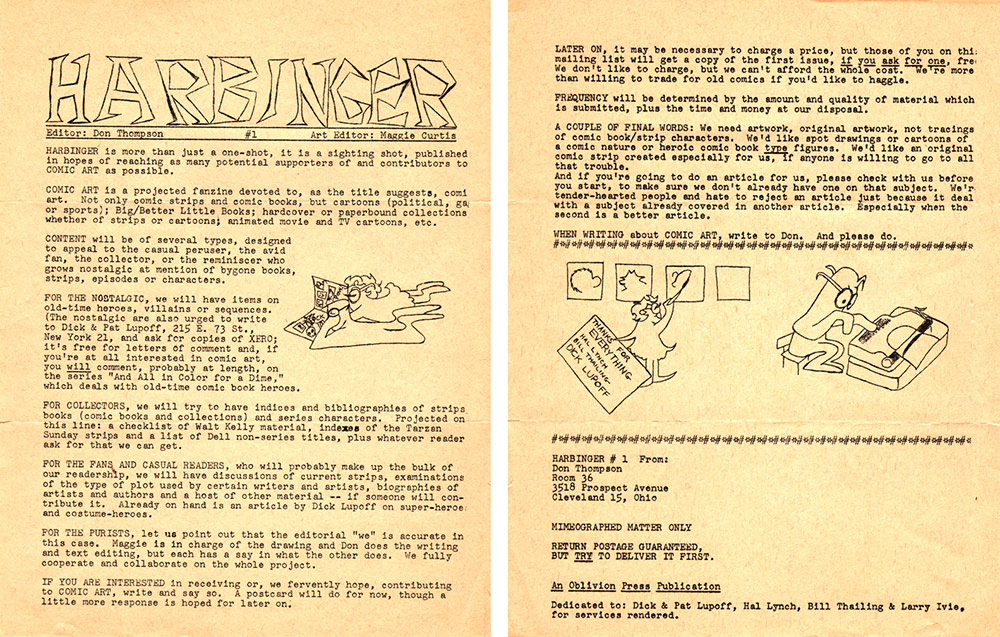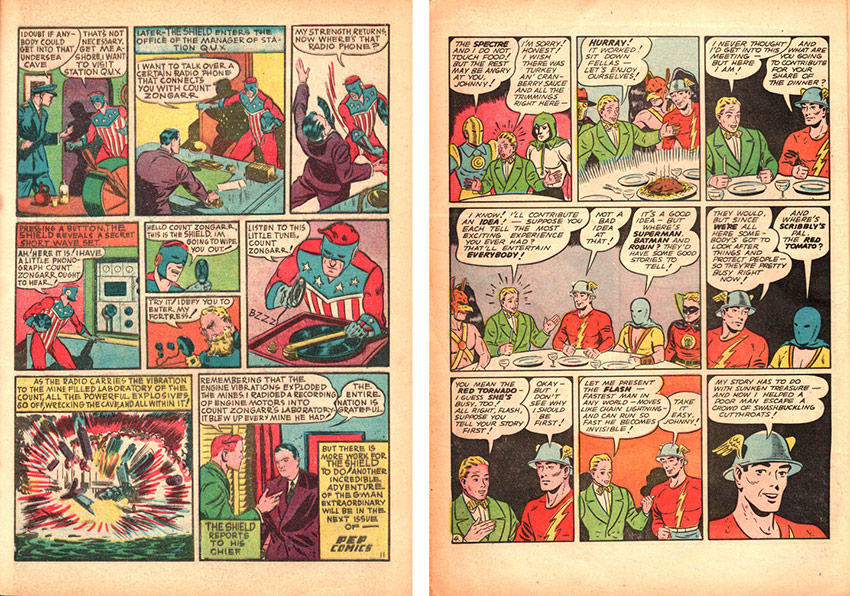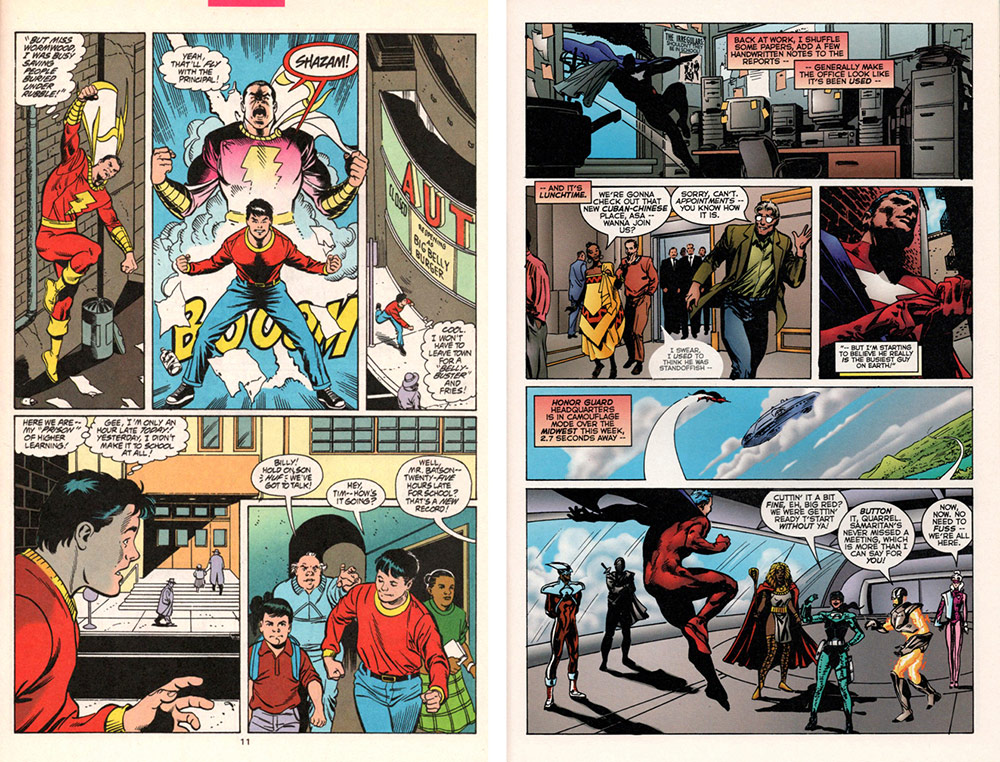MAGGIE’S WORLD BY MAGGIE THOMPSON
Maggie’s World 077: 2020 Vision

Remember Maggie’s World 073? It concerned the fact that 2019 was the year in which the 50th Comic-Con International: San Diego took place. But it also contained a pledge to return to the topic of innovation and evolution in the Olden Days of Comic Books.
A recent look at covers of some January-dated comics made me consider what was going on …

80 Years Ago: 1940
A bunch of publishers got into the field with “Key” anthology comics dated January 1940. Those included Jungle Comics, Pep Comics, Planet Comics, and Flash Comics. Whiz Comics was soon to follow. A look at almost all the covers of comic books dated that year reveals a barrage of action, adventure, battles, and super-characters.
Aside from collections reprinting such comic strips as Terry and the Pirates, Dick Tracy, Little Orphan Annie, and The Captain and the Kids, there were few actual comic comics. Despite such jolly titles as Comics on Parade, Famous Funnies, Funnies, Funny Pages, and More Fun Comics (and, heck, the word “comics” itself), there’s punching, smashing, and peril aplenty.
Sterling North’s May 8, 1940, attack on comic books (“A National Disgrace” in The Chicago Daily News) complained, “Virtually every child in America is reading color ‘comic’ magazines—a poisonous mushroom growth of the last two years. Ten million copies of these sex-horror serials are sold every month. One million dollars are taken from the pockets of America’s children in exchange for graphic insanity.” He contrasted the magazines with newspaper strips: “But a careful examination of the 108 periodicals now on the stands shocked us into activity. At least 70 per cent of the total were of a nature no respectable newspaper would think of accepting.”
Despite his article (or maybe even because of it?), gag titles and funny-animal adventures were soon to populate newsstands. By year’s end, Walt Disney’s Comics and Stories had found a spot among action-adventure titles. In the two decades that followed, comics proliferated and provided an incredible variety of pictured storytelling. There were classics, stand-alone short stories, satiric takes on other stories, and more. And then came 1954 and the Comics Magazine Association of America and its Code of restrictions, sending comics to the nursery.
Then …

60 Years Ago: 1960
Those who had grown up with earlier fare were now old enough to grow nostalgic for what had been, and fan communications grew stronger, as a network formed in what was then our social medium: fandom. There had already been such networking involving E.C. titles and satiric comics in general, and the traditions of science-fiction and fantasy fandom had long been established. In 1960, fans embarked on individual searches for basic information. (A case in point: It took Don and me seven years to compile a list of what titles went with what numbers in Dell’s Four Color series. We published the results in 1968.)
Soon, the Alter-Ego fanzine from Jerry Bails and Roy Thomas began to build an increasing network of superhero fans, and soon there were fan visits, an amateur publishing association, and a multi-day comics convention.

50 Years Ago: 1970
By 1970, a new generation of creators had entered the field. Kids who had grown up reading comic books were now making amateur comic books themselves. And gathered now and then to hang out at comics-focused events. (In 1970, San Diego Comic-Con celebrated its first birthday. Just saying.) In fact, between 1960 and 1970, an initial bunch of fans including Archie Goodwin, Roy Thomas, Len Wein, Marv Wolfman, and Bernie Wrightson—mostly in their 20s—became professionals themselves. In the 1970s, they were joined by such others as Mark Gruenwald, Tony Isabella, Paul Kupperberg, and Paul Levitz.
Fanzines of the day included newsletters, adzines, amateur comics, and other social communications. Back-issue prices seemed to stabilize enough to let Bob Overstreet put together a price guide of established values. (In 1970, chances were that you could get Action Comics #1 in Mint condition for $300, if someone was offering it for sale.)
And so it went. The field evolved, with comics shops replacing newsstands as the place to find comic books—starting with Sea Gate’s direct-market distribution system, created in 1972 by Phil Seuling and Jonni Levas. Comics distribution evolved with a growing number of independent distributors, each offering current comics for sale to shops at a big discount, as long as the shops ordered non-returnably. Comics shops became destination markets increasingly catering to buyers willing to place advance orders for what sounded attractive. Eventually, one distributor became a single source that provided all current comics to those shops.
And Now …
Here we are. Our world seems to be packed with so much entertainment it’s hard to keep up with what’s out there right this minute. And there’s an enormous backlog of terrific comics that were released in earlier times. Heck, in 1962, Don and I were thrilled to be able to publish in Comic Art #4 a feature on a comic strip of which we hadn’t heard until then: Ed Wheelan’s Minute Movies. He’d spun off comic-book features in the 1940s, but we’d missed them. Nevertheless, in the early days of comics fandom, Hal Lynch and Vern Coriell put us in touch with Ed (1888-1966), with whom we quickly became friends. But—and here’s the point—who today has read any of his fascinating strip, released from 1921 to 1935? In 1977, Hyperion made the 1927 and 1928 strips available in its “Classic American Comic Strips” series, and there were a few other bits and pieces available. But that’s it. And that’s the proverbial tip of the back-issue iceberg.
So will online access to all comics, past and present, be A Thing at some point? And, if people obsess on the past, what happens to creators in the future who want to make a living from what they do? What will the market be like? How will we access what we access?
And what about 80 years from now? It’ll be 2100. We’ve seen how far comics have come. Where will comics go?
Maggie’s World by Maggie Thompson appears the first Tuesday of every month here on Toucan!